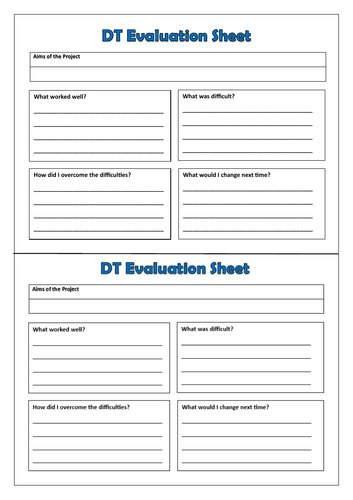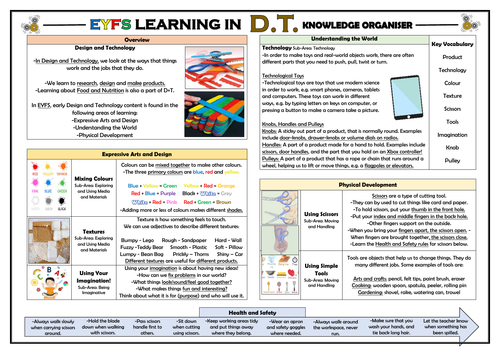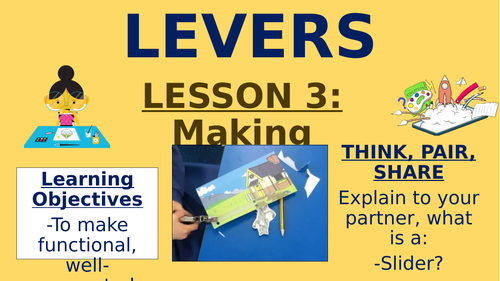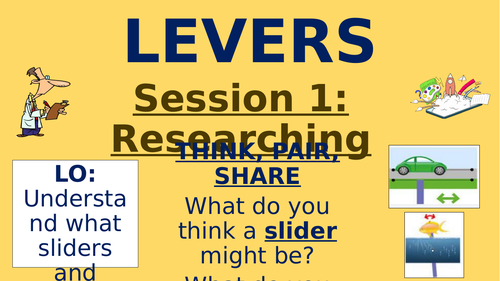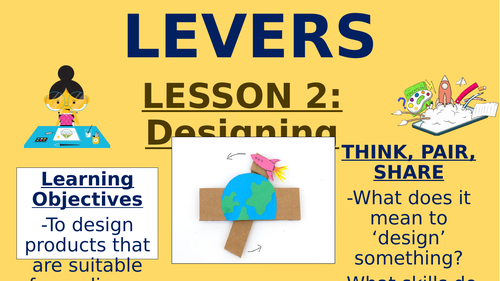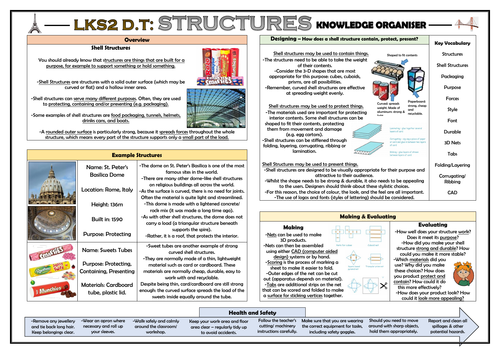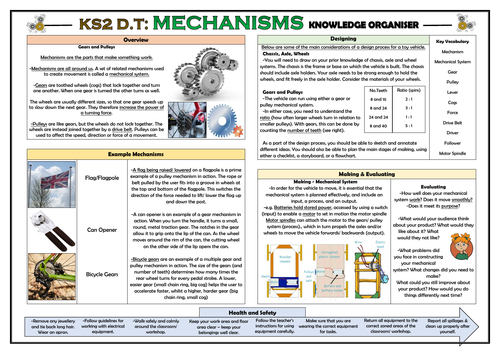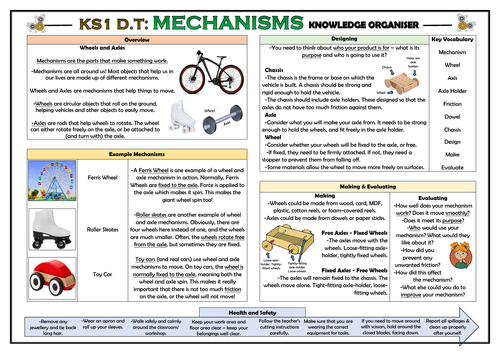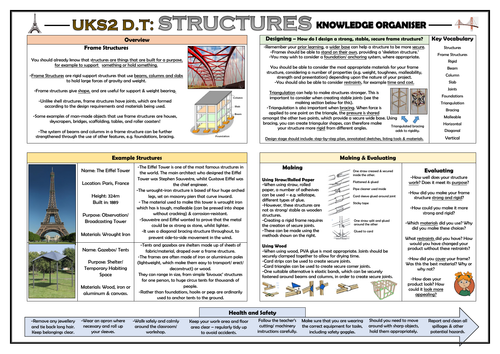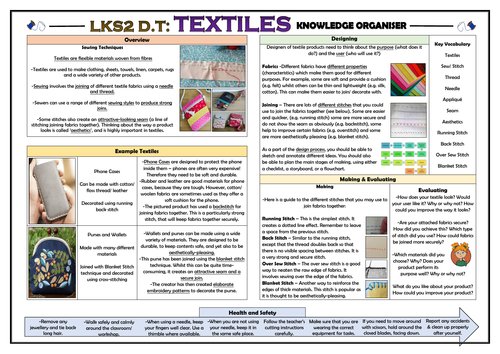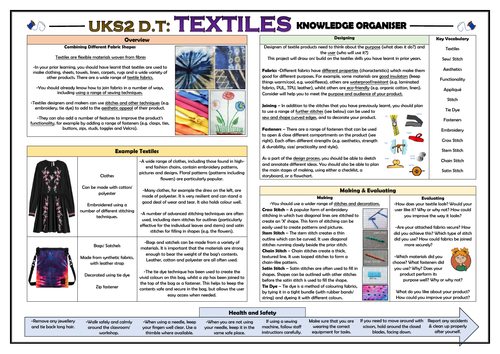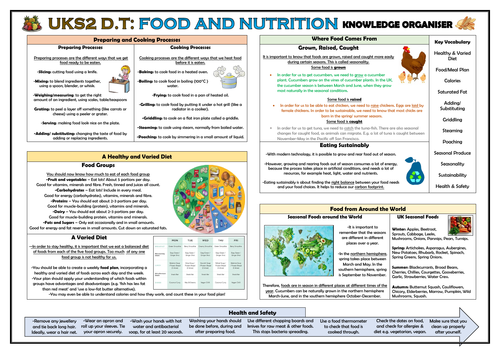
3k+Uploads
1861k+Views
2207k+Downloads
Design, engineering and technology

DT Project Evaluation Sheet!
A simple DT project evaluation sheet. Includes 2 per sheet to save paper!
Provided as both PDF and Word documents.

DT Mechanisms - Wheels and Axles - Making!
This engaging and purposeful series of lessons enables children to gradually develop towards constructing vehicles using wheels and axles. The resources were originally created to guide children towards building safari buggies, but the resources can easily be adapted to fit your own particular project.
This is the third lesson in the series, which focuses on making the wheel, axle and enables children to:
-Recall how wheel and axle mechanisms work;
-Recall key terminology relating to wheel and axle mechanisms;
-Understand a clear design brief;
-Understand how to put together a chassis, different types of wheel/ axle fixings and washers;
-Test and improve their base vehicle.
The resource is made up of a 12-slide PowerPoint presentation.
These lessons were originally created for children in years 2 and 3, but may be adapted for slightly older and younger year groups.

DT Mechanisms - Wheels and Axles - Evaluating!
This engaging and purposeful series of lessons enables children to gradually develop towards constructing vehicles using wheels and axles. The resources were originally created to guide children towards building safari buggies, but the resources can easily be adapted to fit your own particular project.
This is the fifth and final lesson in the series, in which children focus on evaluating their products. They:
-Recall how wheel and axle mechanisms work;
-Recall key terminology relating to wheel and axle mechanisms;
-Understand which skills and knowledge they will need in order to successfully evaluate products;
-Use a clear evaluation template and success criteria to evaluate their own products.
The resource is made up of a 10-slide PowerPoint presentation and the evaluation template.
These lessons were originally created for children in years 2 and 3, but may be adapted for slightly older and younger year groups.

EYFS Learning in Design and Technology - Knowledge Organiser!
This clear, detailed and visually-appealing resource helps to detail and categorise the foundation Design and Technology learning that takes place in the EYFS stage.
It is an important resource for EYFS teachers and parents, but also Design and Technology subject leaders to aid the development of a clearly-mapped and well-sequenced D+T curriculum across the school.
This organiser groups the D+T- related learning into the relevant EYFS areas of learning, including:
-Expressive Arts and Design;
-Understanding the World;
-Physical Development.
There is also a section detailing ‘Health and Safety’ considerations.
The resource is designed to be printed onto A3, and is provided as both a PDF and a Word version (so that you can edit if you want to). All images used are licensed for commercial use and are cited on a separate document (included).

DT Mechanisms - KS1 Sliders and Levers - Making!
This engaging and purposeful lesson enables children to make their slider and lever mechanism projects.
The lesson was originally taught as a part of a series of lessons created to guide children towards creating polar slider and lever scenes, but the resources can easily be adapted to fit your own particular project.
This lesson enables children to:
-Recall how slider and lever mechanisms work;
-Recall key terminology relating to slider and lever mechanisms;
-Understand a clear design brief;
-Understand the key considerations of the design, including the functionality of the mechanism, in addition to its appearance and its appropriateness;
-Follow guidance in order to create the slider/ lever mechanisms;
-Test and improve their mechanism;
-Peer and self-assess their designs in relation to the success criteria.
Included is an eye-catching and comprehensive 16-slide PowerPoint presentation, and pictures for children to cut out use (if they are not drawing their own pictures - these are provided as both Word and PDF).
These lessons were originally created for children in years 1-2, but may be adapted for slightly older year groups.

DT Mechanisms - KS1 Sliders and Levers - Researching!
This engaging and purposeful lesson enables children to understand what slider and lever mechanisms are and consider their uses.
The lesson was originally taught as a part of a series of lessons created to guide children towards creating polar slider and lever scenes, but the resources can easily be adapted to fit your own particular project.
This first lesson helps children to:
-Understand what slider and lever mechanisms are;
-Consider objects, vehicles and tools that use slider and lever mechanisms;
-Understand how slider and lever mechanisms work, including introducing children to the key vocabulary (e.g. bridge, slot, pivot, etc);
-Begin thinking about design considerations for creating a polar slider/ lever mechanisms picture.
Included is an eye-catching and comprehensive 17-slide PowerPoint presentation, and a research template (in both Word and PDF).
These lessons were originally created for children in years 1-2, but may be adapted for slightly older and younger year groups. The other lessons in the series are available on this site individually, or all of the lessons can be purchased as a part of a bundle.

DT Mechanisms - KS1 Slides and Levers - Designing!
This engaging and purposeful lesson enables children to design slider and lever mechanism projects.
The lesson was originally taught as a part of a series of lessons created to guide children towards creating polar slider and lever scenes, but the resources can easily be adapted to fit your own particular project.
This lesson enables children to:
-Recall how slider and lever mechanisms work;
-Recall key terminology relating to slider and lever mechanisms;
-Understand a clear design brief;
-Understand the key considerations of the design, including the functionality of the mechanism, in addition to its appearance and its appropriateness;
-Complete their plans, using the well-structured planning sheet;
-Peer and self-assess their designs in relation to the success criteria.
Included is an eye-catching and comprehensive 16-slide PowerPoint presentation, and the design template (in both Word and PDF - A3).
These lessons were originally created for children in years 1-2, but may be adapted for slightly older year groups.

DT Mechanisms - Wheels and Axles - Designing!
This engaging and purposeful series of lessons enables children to gradually develop towards constructing prototype vehicles using wheels and axles. The resources were originally created to guide children towards building safari buggies, but the resources can easily be adapted to fit your own particular project.
This is the second lesson in the series, which enables children to:
-Recall how wheel and axle mechanisms work;
-Recall key terminology relating to wheel and axle mechanisms;
-Understand a clear design brief;
-Understand the key considerations of the design, including the effectiveness of the mechanism, and the functionality and appearance of the vehicle;
-Complete their plans, using the well-structured planning sheet;
-Peer and self-assess their designs in relation to the success criteria.
Included is an eye-catching and comprehensive 14-slide PowerPoint presentation, and the design template (in both Word and PDF - A3).
These lessons were originally created for children in year 2, but may be adapted for slightly older and younger year groups.

DT Mechanisms - Wheels and Axles - Researching!
This engaging and purposeful series of lessons enables children to gradually develop towards constructing prototype vehicles using wheels and axles. The resources were originally created to guide children towards building safari buggies, but the resources can easily be adapted to fit your own particular project.
This first lesson helps children to:
-Understand how wheel and axle mechanisms work;
-Consider objects, vehicles and tools that use wheel and axle mechanisms;
-Understand what the chassis and body of vehicles are;
-Begin thinking about design considerations of the wheels, axles, chassis and body of different vehicles, with a particular consideration of purpose and audience.
Included is an eye-catching and comprehensive 20-slide PowerPoint presentation, and a research template (in both Word and PDF).
These lessons were originally created for children in year 2, but may be adapted for slightly older and younger year groups.

DT Mechanisms - Wheels and Axles - Constructing the Vehicle Body!
This engaging and purposeful series of lessons enables children to gradually develop towards constructing vehicles using wheels and axles. The resources were originally created to guide children towards building safari buggies, but the resources can easily be adapted to fit your own particular project.
This is the fourth lesson in the series, which focuses on making the body of the vehicle. Children:
-Recall how wheel and axle mechanisms work;
-Recall key terminology relating to wheel and axle mechanisms;
-Understand how to use nets to create strong cube/ cuboid shapes;
-Understand how to use a variety of materials to make windscreens/ spare wheels/ bumpers/ roofs;
-Test and improve their vehicle.
The resource is made up of a 13-slide PowerPoint presentation and the nets needed for the cube/ cuboid shapes.
These lessons were originally created for children in years 2 and 3, but may be adapted for slightly older and younger year groups.

DT Food and Nutrition - Healthy Snacks - Researching!
This engaging and purposeful series of lessons enables children to gradually develop towards creating healthy snacks. The resources have originally been created to guide children towards creating snacks with a bread/ cracker/ rice cake base, but the resources can easily be adapted to fit your own particular project.
This first lesson helps children to:
-Understand what the terms ‘healthy’ and ‘balanced’ mean;
-Learn about the different food groups, and understand how much of each category is healthy (utilising a clear and concise video - hyperlinked);
-Understand what effect the values of each food type have on the body;
-Research examples of each of the different food types, recording the values on their research template.
Included is an eye-catching and comprehensive 17-slide PowerPoint presentation, and a research template (in both Word and PDF). The hyperlink to the video is included on slide 4.
These lessons were originally created for children in years 3 and 4, but may be adapted for slightly older and younger year groups.

DT: Structures - Lower KS2 Knowledge Organiser!
This clear, detailed and visually-appealing resource offers a complete reference point for children, teachers and parents learning about ‘Structures’ as a part of the KS2 curriculum in Design and Technology. The organiser is clear, logical and fully meets the expectations of the National Curriculum.
This organiser has a particular emphasis on shell structures.
It includes sections on:
-Overview - Structures and Shell Structures;
-Example Structures - St. Peter’s Basilica Dome and Sweet Tubes;
-Designing - How does a shell structure contain, protect and present?;
-Making and Evaluating;
-Health and Safety Guidance.
The resource is designed to be printed onto A3, and is provided as both a PDF and a Word version (so that you can edit if you want to). All images used are licensed for commercial use and are cited on a separate document (included).

DT: Mechanisms - Sliders and Levers - KS1 Knowledge Organiser!
This clear, detailed and visually-appealing resource offers a complete reference point for children, teachers and parents learning about ‘Mechanisms’ as a part of the KS1 curriculum in Design and Technology. The organiser is clear, logical and fully meets the expectations of the National Curriculum.
This organiser has a particular emphasis on sliders and levers.
It includes sections on:
-Overview - Mechanisms, Sliders and Levers;
-Example Mechanisms - Seesaw, Scissors, Children’s Books, Drawers;
-Designing;
-Making and Evaluating;
-Health and Safety Guidance.
The resource is designed to be printed onto A3, and is provided as both a PDF and a Word version (so that you can edit if you want to). All images used are licensed for commercial use and are cited on a separate document (included).

DT: Mechanisms - Gears and Pulleys - KS2 Knowledge Organiser!
This clear, detailed and visually-appealing resource offers a complete reference point for children, teachers and parents building their knowledge of mechanical systems as a part of the KS2 curriculum in Design and Technology. The organiser is clear, logical and fully meets the expectations of the National Curriculum.
This organiser has a particular emphasis on gears and pulleys
It includes sections on:
-Overview - Mechanical Systems, Gears and Pulleys;
-Example Mechanisms - Flagpole, Can Opener, Bicycle;
-Designing - Toy Car;
-Making and Evaluating - Toy Car;
-Health and Safety Guidance.
The resource is designed to be printed onto A3, and is provided as both a PDF and a Word version (so that you can edit if you want to). All images used are licensed for commercial use and are cited on a separate document (included).

DT: Mechanisms - Wheels and Axles - KS1 Knowledge Organiser!
This clear, detailed and visually-appealing resource offers a complete reference point for children, teachers and parents learning about ‘Mechanisms’ as a part of the KS1 curriculum in Design and Technology. The organiser is clear, logical and fully meets the expectations of the National Curriculum.
This organiser has a particular emphasis on wheels and axles.
It includes sections on:
-Overview - Mechanisms, Wheels and Axles;
-Example Mechanisms - Ferris Wheel, Roller Skates, Toy Car;
-Designing;
-Making and Evaluating;
-Health and Safety Guidance.
The resource is designed to be printed onto A3, and is provided as both a PDF and a Word version (so that you can edit if you want to). All images used are licensed for commercial use and are cited on a separate document (included).

DT: Structures - Upper KS2 Knowledge Organiser!
This clear, detailed and visually-appealing resource offers a complete reference point for children, teachers and parents learning about ‘Structures’ as a part of the KS2 curriculum in Design and Technology. The organiser is clear, logical and fully meets the expectations of the National Curriculum.
This organiser has a particular emphasis on frame structures.
It includes sections on:
-Overview - Structures and Frame Structures;
-Example Structures - The Eiffel Tower and Tents/Gazebos;
-Designing - How do I design a strong, stable, secure frame structure;
-Making and Evaluating;
-Health and Safety Guidance.
The resource is designed to be printed onto A3, and is provided as both a PDF and a Word version (so that you can edit if you want to). All images used are licensed for commercial use and are cited on a separate document (included).

DT: Structures - KS1 Knowledge Organiser!
This clear, detailed and visually-appealing resource offers a complete reference point for children, teachers and parents learning about ‘Structures’ as a part of the KS1 curriculum in Design and Technology. The organiser is clear, logical and fully meets the expectations of the National Curriculum.
This organiser has a particular emphasis on freestanding structures.
It includes sections on:
-Overview - Structures and Freestanding Structures;
-Example Structures - Burj Khalifa and Forth Bridge;
-Designing - What makes a strong, stable, rigid structure?;
-Making and Evaluating;
-Health and Safety Guidance.
The resource is designed to be printed onto A3, and is provided as both a PDF and a Word version (so that you can edit if you want to). All images used are licensed for commercial use and are cited on a separate document (included).

DT: Textiles - Sewing Techniques - Lower KS2 Knowledge Organiser!
This clear, detailed and visually-appealing resource offers a complete reference point for children, teachers and parents building their knowledge of Textiles as a part of the KS2 curriculum in Design and Technology. The organiser is clear, logical and fully meets the expectations of the National Curriculum.
This organiser has a particular emphasis on developing sewing techniques.
It includes sections on:
-Overview - Textiles and Sewing Techniques;
-Example Textiles - Phone Cases, Wallets and Purses;
-Designing;
-Making and Evaluating;
-Health and Safety Guidance.
The resource is designed to be printed onto A3, and is provided as both a PDF and a Word version (so that you can edit if you want to). All images used are licensed for commercial use and are cited on a separate document (included).

DT: Textiles - Combining Different Fabric Shapes - Upper KS2 Knowledge Organiser!
This clear, detailed and visually-appealing resource offers a complete reference point for children, teachers and parents developing their knowledge of Textiles as a part of the KS2 curriculum in Design and Technology. The organiser is clear, logical and fully meets the expectations of the National Curriculum.
This organiser has a particular emphasis on combining different fabric shapes
It includes sections on:
-Overview - Textiles and Combining Fabric Shapes;
-Example Textiles - Embroidered Clothes and Tie Dye Bags;
-Designing;
-Making and Evaluating;
-Health and Safety Guidance.
The resource is designed to be printed onto A3, and is provided as both a PDF and a Word version (so that you can edit if you want to). All images used are licensed for commercial use and are cited on a separate document (included).

DT: Food and Nutrition - Upper KS2 Knowledge Organiser!
This clear, detailed and visually-appealing resource offers a complete reference point for children, teachers and parents covering the ‘Food and Nutrition’ elements of your upper KS2 curriculum in Design and Technology. The organiser is clear, logical and fully meets the expectations of the National Curriculum.
It includes sections on:
-Preparing and Cooking Processes;
-A Healthy and Varied Diet;
-Where Food Comes From (including seasonality);
-Foods Around the World;
-Health and Safety Guidance.
The resource is designed to be printed onto A3, and is provided as both a PDF and a Word version (so that you can edit if you want to). All images used are licensed for commercial use and are cited on a separate document (included).

